

INTRODUCTION TO E-FAUNA BC
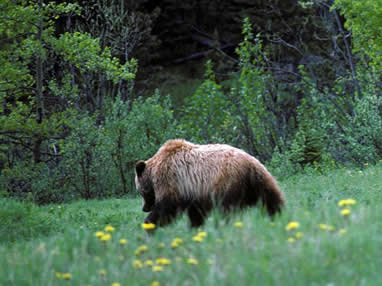
Grizzly Bear (Ursus arctos), by Ian Gardiner.
Editor and Project Coordinator
Brian Klinkenberg
Section Editors
Libby Avis: Moths
Aaron Baldwin: Marine Invertebrates
Robb Bennett: Spiders
Rob Cannings: Dragonflies and Robber Flies
Jamie Fenneman: Birds
Cris Guppy: Butterflies
Ian Gardiner: Freshwater Crustaceans and Molluscs
Rose Klinkenberg: General
Eric (Rick) Taylor: Fish
E-Fauna BC is a volunteer-driven, GIS-based biogeographic atlas of the wildlife of British Columbia that provides a centralized source of scientifically accurate information for use in conservation, education and research. Species covered range from mammals, birds, amphibians and fish to sea stars, sea cucumbers, insect and arachnids--and includes marine, freshwater and terrestrial species.
E-Fauna BC is part of a broader initiative on the biodiversity and biogeography of British Columbia, a 3-part project that provides documentation on the wild species and biodiversity of the province. This includes two comprehensive atlases (E-Flora BC and E-Fauna BC) and an umbrella website (Biodiversity of British Columbia) that introduces biodiversity concepts.
As a project built on volunteer geographic information (VGI), using citizen science, E-Fauna BC is the collaborative effort of many BC biologists and photographers who support our vision of creating an easily accessible centralized source of information on the wildlife of the province. Georeferenced photos contributed to the site are in effect voucher records for species occurrences. All records are verified before publication, ensuring a high level of data validity. This sort of VGI project, where citizens and experts work together to build knowledge, is at the forefront of data gathering to aid in biodiversity research and is part of a growing number of VGI projects across North America.
E-Fauna BC presently provides atlas pages for all vertebrates in BC and many invertebrate species. Although we aim to provide a summary (photo, map, introductory information and species-specific links) for each species, information is not yet available for some groups. However, as a 'living atlas', E-Fauna BC is a work-in-progress and information will be added as it becomes available.
One of the most significant features on E-Fauna BC is the interactive maps. Our maps focus primarily on the Pacific Northwest but do provide some coverage of other regions. The maps include biogeographic layers, such as climate and precipitation, and allow users access to the data behind the distribution dots.
Use the E-Fauna BC atlas pages to learn about individual species found in British Columbia, or read our general introductory pages to learn about wildlife groups in the province, such as bats, birds, butterflies or starfish. Learn about the incredible glass sponges found in our coastal waters, or about cold-water corals in BC.
Read about citizen science on E-Fauna BC.
Read about contributing photos to E-Fauna BC .
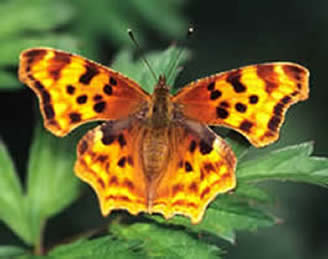
Satyr Anglewing (Polygonia satyrus), photo by Ian Lane
Finding Information on E-Fauna BC
This information on E-Fauna BC is presented in FOUR ways: 1) through species atlas pages and 2) associated mapping, 3) through a set of introductory information pages, and 4) through comprehensive photo galleries.
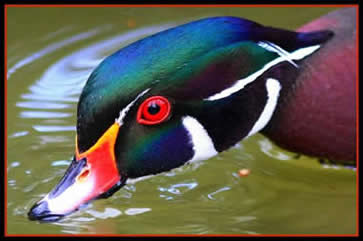
Wood Duck, photo by Nigel Tate
.
What information does E-Fauna BC bring online?
In developing E-Fauna BC, we have brought online key information on wildlife from several expert sources, including published and unpublished information, museum collections, out-of-print publications, and new information provided by provincial experts. The information from these sources is displayed on our atlas pages and in our introduction pages.
Thanks to the support of the Royal British Columbia Museum, we presently bring online information contained in the following publications: The Mosquitoes of British Columbia, The Dragonflies of British Columbia, The Crabs of British Columbia, The Opossums, Moles and Shrews of British Columbia, The Hoofed Mammals of British Columbia, and the Butterflies of British Columbia. As a special feature, we also bring online the now out-of-print publication Alien Animals in British Columbia. This publication provides historical information on early introductions of wildlife species in the province, and is an important part of our 'widlife history'.
In addition to these existing publications, we also bring online text from the three-volume manuscript-in-prepartion, Insect Families of British Columbia (Cannings and Scudder)--a work in progress by Geoff Scudder and Rob Cannings.
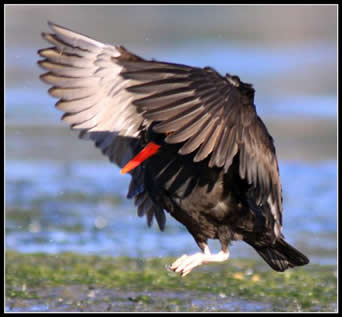
Black Oystercatcher, photo by Nigel Tate
Why Develop an Online Atlas of BC Wildlife?
Documenting the biodiversity of the province, making this knowledge readily available online in a centralized location, and directing users to other valid information sources is an important step in our efforts to protect our wildlife and their habitats. Not only does E-Fauna BC highlight the species diversity that we have in the province, through compilation of new and existing information, it also easily illustrates gaps in our knowledge-base. Identifying gaps is important in conservation planning, and is a significant step towards protection of BC's biodiversity. However, the most significant feature of E-Fauna BC is its web-based nature, which means that species occurrence information can be constantly and readily updated--something that can't be done with paper books. This is a critical ability for biodiversity conservation, where availability of the most current information is important in order to assess species status and the need for intervention.
To learn more about biodiversity in British Columbia, visit the Biodiversity of BC website. To learn more about plant diversity in BC, visit E-Flora BC, the atlas of the plants of British Columbia.
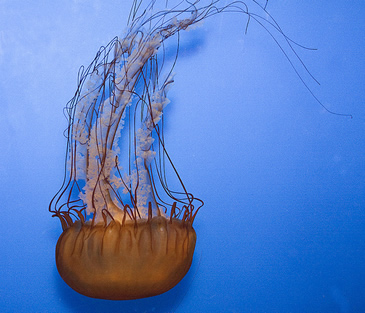
Sea Nettle, photo by Brian Klinkenberg
What Can I Learn from E-Fauna BC?
The E-Fauna BC atlas pages allow you to learn specific information about a species, including where it is found in the province (our maps), what it looks like (our photos), species biology, and species status in the province. You can also use our information pages to learn about more general zoological topics, such as the zoogeography of the province. Our checklist page provides comprehensive accurate listings of the species that are found in BC as compiled by provincial experts.
The Best Way to View E-Fauna BC
E-Fauna BC will present many photographs by BC photographers and wildlife experts. For best viewing of the photos on this site, we recommend that you colour balance your monitor. For directions on how to do this, visit David Blevins photography page. Instructions for balancing your monitor are given there.
Copyright Information
Photos, illustrations and text on E-Fauna BC are subject to Canadian Copyright Laws. Please contact the respective copyright holder if you wish to use any copyrighted material. Information on who owns copyright and who has given permissions may be found on our "About the Data" page located in the menu to the right For photos, please refer to the Image FAQs for additional copyright information and photo needs.
Kingfisher, © by BC artist Carolyn Wood
Please cite these pages as:
Author, date, page title. In: Klinkenberg, Brian. (Editor) 2021. E-Fauna BC: Electronic Atlas of the Fauna of British Columbia [www.efauna.bc.ca]. Lab for Advanced Spatial Analysis, Department of Geography, University of British Columbia, Vancouver. [Date Accessed]
© Copyright 2021 E-Fauna BC.